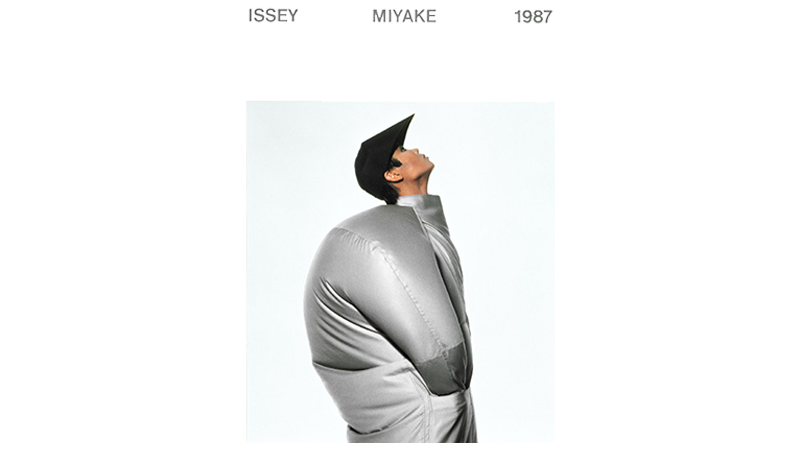Issey Miyake x Irving Penn is unmistakably one of fashion history’s most revered collaborative works between designer and photographer. Their demiurgic relationship was more of a celestial marriage built on mutual admiration and trust. With one hand washing the other, their vision together continuously built upon itself.
While the 2006 Kyoto Prize winner’s designs steadily honed in on technique, innovation, and versatility, Penn had a way of unlocking the garment’s visual capabilities even more; this filtered back to the source by instilling fresh inspiration from and for Miyake himself. To a volume shooter like Penn, the composition of the Japanese artist’s garments in conjunction with Penn’s use of negative space seemed endless. In truth, Penn didn’t need much to bring these contemporary works to life, but there was a certain timbre to his lens that rhythmically expanded on Miyake’s ingenuity through layering and reassembling the two-dimensional, geometric cuts. He played with the opacity, transparency, movement, and structure to form a sort of algebraic dependent system yielding infinite solutions to his pictorial works.

Duality is one theme in Miyake’s ethos. Having spent the majority of his career evading the association of the bombing in his hometown Hiroshima, while still being deeply afflicted with the memory, Miyake flows in the unregulated basin of beauty and creation. Additionally, while bypassing this aspect of his DNA, he dedicated himself to the fusion of Eastern and Western concepts. He upholds tradition by intensive research and study in areas such as foldable forms, a characteristic of Japanese clothing and craftwork, yet applies the same intention to the research and study of new materials, such as crease-resistant suits made of paper. He makes the mere notion of mass-production seem intentional and sustainable; one whose desire is to use one piece of cloth while simultaneously embracing acute angles and free form.

Irving Penn was his match and had paralleled motifs of duality. After learning of his mentor’s passing of cancer in 1971 (in tandem with a national, callous shift away from cigarettes) he spent three years detailing cigarette butts he fished from New York City streets in his studio. This series was antithetical to previous portraits of people smoking, either for fashion or cigarette ads, but equally as striking. Their worlds may have been culturally different, but their obsession was the same. Penn’s desire to exploit his subjects in their entirety, with authenticity, was a visual language that could never be mistaken. A warm-up round in one session could have been 200 images before the model and photographer would find their symbiotic stride. For an artist like Penn, the anatomy of Miyake’s work was a playground of which he had total freedom.
The two first met at an American Vogue editorial shoot in 1983; from 1986 and lasting 13 years, Penn photographed all of Miyake’s collections for internal and external use with no oversight from Miyake himself of Penn’s methods. An estimated 250 images were produced and transcribed into 7 books, with international exhibitions commemorating their union.

With decades of fabric experimentation and iconic images that could outlast the garments themselves, Issey Miyake continues to defy norms with his contemporary lines for men and women. On one hand, Pleats Please carries on his pleated legacy with lightweight renditions of feminine basics. On the other, Homme Plissé appeals to the senses through avant-garde forms and a playful approach to menswear. Miyake's eye for structural fabrication reverberates throughout, creating a dialogue between the apparel and the body it covers.
Text by Shahrnaz Javid

